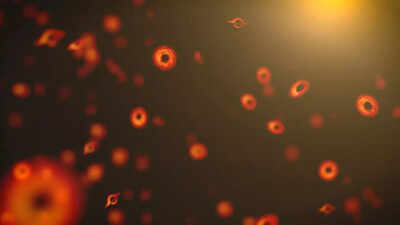Supermassive Black Holes Rank Among The Most Mysterious Objects in the Cosmos, Containing Billions of Times the Sun’s Mass. Their appearance so early in the universe’s history has long baffled astronomers, as conventional theories struggle to explain how they grove so rapidly. Traditionally, Black Holes are thought to emerge from collapsing stars and expand slowly through merges or accretion, a process taking billions of years. However, new research published in the Open Journal of Astrophysics Sugges a radical passibility: PrimorDial Black Holes, Born Moments after the Big Bang, May have acted as seeds, enabling the Swift Development of these enormous cosmic giants.
Astronomers say Primordial Black Holes Captured by the James webb space telescope May have grown into supermassive giants
Observations from nasa’s james webb space telescope has revised supermassive black holes that existed just 700 million years after the big bang, and posesibly Eveen earlier. This discovery is striiking trust traditional models of black hole formation sugest that such anormous objects should take take take billions of years to form through processes like the collapses of massive stars, guradal Accreation of matter, or the merging of smaller black holes. As John Regan, A Research Fellow at Maynooth University, Explains, The Fact that Supermassive Black Holes are in Place SO Early in the Universe’s History Sugges Current models may be at play.Their presence implies that Black Holes May have grown much more efficiently in the dens, gas-rich conditions of the young universe, or that an alternative mechanism, such as prideled bless Shortly after the big bang, even there is provided a head start.
Primordial Black Holes May have formed right after the big bang, and shaped the universe
Primordial Black Holes Difer from the More Familiar Stellar Black Holes, which are created by the deaths of massive stars. INTEAD, they are thought to have formed directly from extreme density fluctuations in the hot, denses conditions that followed the big bang. Unlike Steller Black Holes, they could have emerged immediatily and without delay, giving them a significant head start in the race to grow. Their potential mass range is vast, from tiny fractions of a gram to objects as heavy as 100,000 suns. Some scientists have even proposed that PrimorDial Black Holes Might Help Explain Dark Matter, The Mysterious, Invisible Material That Most of The Universes’s Mater Butter Buts Mater Buts Detected.
From tiny seeds to giats: Simulations Reveal How PrimorDial Black Holes Grew
Cosmological simulations sugges that Primordial Black Holes May have had several advantages that made rapid growth poses. Forming so early Gave them more time to accumulate mass, and in some cases, they may have been born born relatively large compared to Typical Stellar Black Holes. Their ability to settle into the dens center of early galaxies would also have allowed them to accuser material quickly and efficiently. In this way, Primordial Black Holes Could have grown into the massive giants seen in the first billion years of the universe, bypassing the limitations of conventional models of black hole growth.
How Scientists are testing the primeterdial black hole theory
At present, the existence of PrimorDial Black Holes Remains Theoretical. There is no direct observational evidence, but astronomers are exploring multiple possibilities. The discovery of unusually small Black Holes in the Modern Universe, For Example, Could Sugged they did not originate from dying stars and may insterad have primoredial origins. Scientists are also investigating wheether such black holes un account for some or all of all of Dark matter, and they are searching for signatures of their presence in the very early universes. The James Webb Space Telescope and Future Gravitational Wave Studies May Provide Critical Clues that Confirm or Rule out the Role of PrimorDial Black Holes.The idea that tiny black holes from the big bang may have grown into the enormous giants we see anchoring galaxies today is an exciting development in astroophyssics. Although theory remain unconferred, it represents one of the most promising explanations for the long-standing mystery of supermassive black hole formation. As observations Deepen and Simulations Improve, Astronomers May Soon Uncover With the Ancient Relics of the Universe’s Birth Truply Shaped The Cosmos in Ways We Arely Beginning to SuperStand.Also read | The telescopefish: this binocular-eye-sea hunter looks straight out of a supervillain movie



